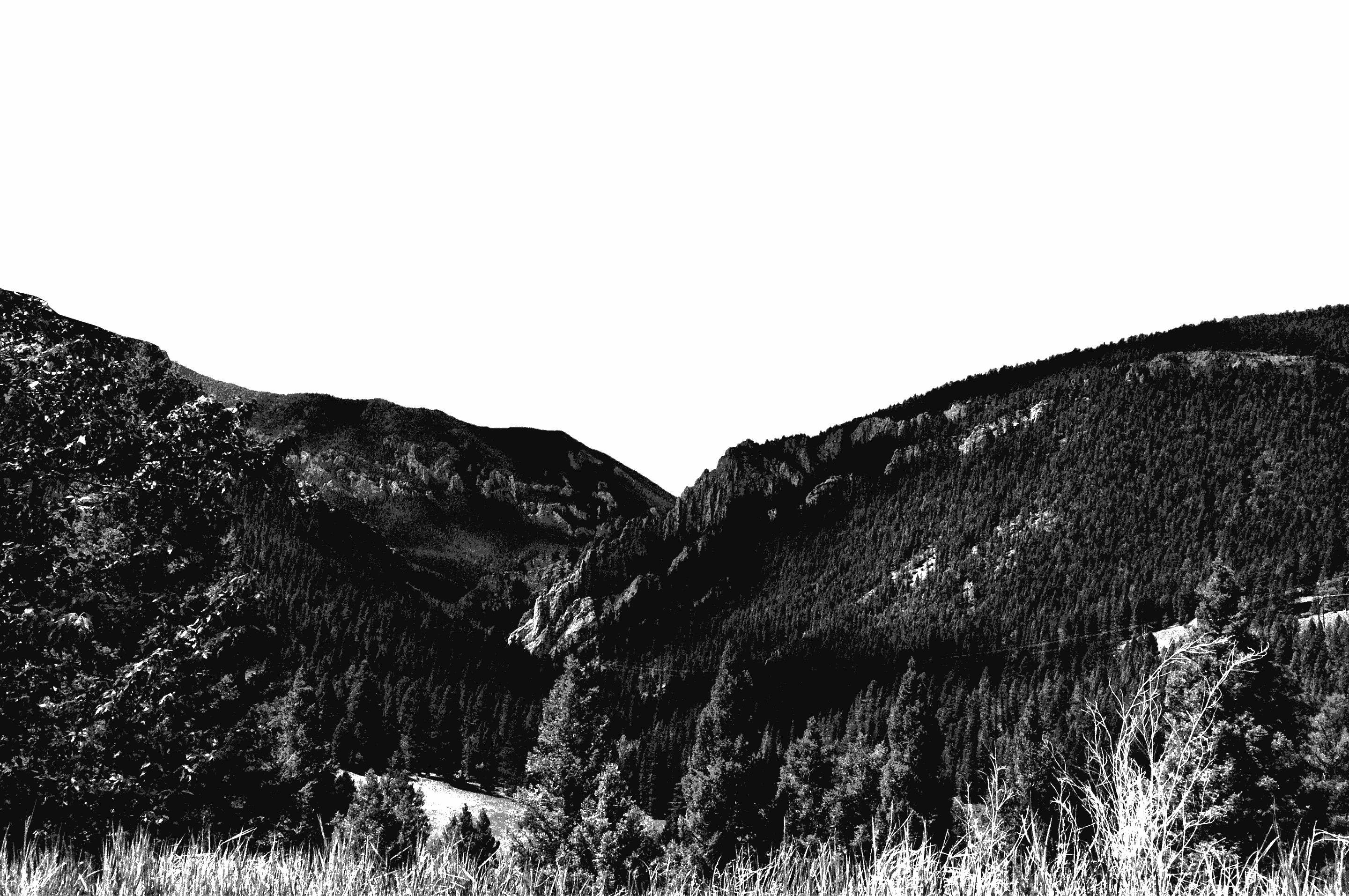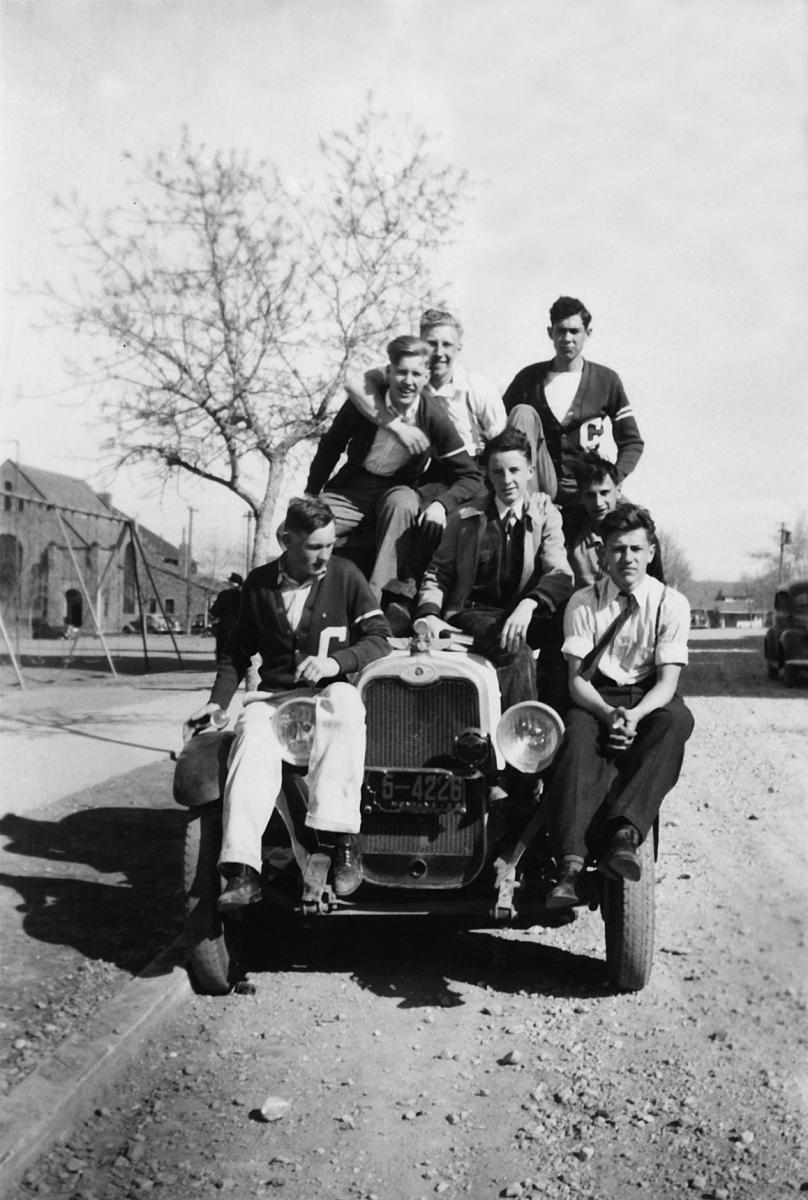

History

The History of Carroll College
 Founded in 1909 in Helena, Montana, by the Catholic Diocese of Helena, Carroll offers an outstanding and affordable education that positions students aggressively for successful job placement and admission to graduate, law and medical schools. Among the many benefits Carroll students enjoy are cutting-edge undergraduate research and professional internship opportunities in Montana's capital city and generous merit scholarships.
Founded in 1909 in Helena, Montana, by the Catholic Diocese of Helena, Carroll offers an outstanding and affordable education that positions students aggressively for successful job placement and admission to graduate, law and medical schools. Among the many benefits Carroll students enjoy are cutting-edge undergraduate research and professional internship opportunities in Montana's capital city and generous merit scholarships.
A Brief History of Carroll College
 In 1883, the first bishop of Helena, John Baptist Brondel, proposed a Catholic college in Montana to help produce future priests for the soon-to-be diocese of Helena. Unfortunately, he died before his plans could be realized. Pope Pius X selected as Brondel's successor a young priest from Dubuque, Iowa: John Patrick Carroll.
In 1883, the first bishop of Helena, John Baptist Brondel, proposed a Catholic college in Montana to help produce future priests for the soon-to-be diocese of Helena. Unfortunately, he died before his plans could be realized. Pope Pius X selected as Brondel's successor a young priest from Dubuque, Iowa: John Patrick Carroll.
Prior to his appointment, Carroll was the president of St. Joseph's College in Dubuque (now known as Loras College). He had been appointed president there just five years after joining the faculty. Upon his arrival in Montana, the newly appointed Bishop articulated three goals: to establish a Catholic school system, to build a cathedral (pictured below), and to carry forward Bishop Brondel’s vision of the first Catholic college in Montana. According to Carroll College historian Dr. Robert Swartout, “Carroll's most telling qualities were his deep and unwavering commitment to his faith, his intellectual breadth, his strong administrative talents (including his ability to stay focused on the primary task at hand), and his passion for Catholic education" (Bold Minds & Blessed Hearts, 8). Read more about the founding of Carroll College
Centennial History Book
 Bold Minds and Blessed Hands: The First Century of Montana's Carroll College chronicles Carroll's epic first century and captures the essence of the college's ascent to national acclaim. With historic photographs memorializing the College's greatest moments, the book examines five phases of Carroll's development.
Bold Minds and Blessed Hands: The First Century of Montana's Carroll College chronicles Carroll's epic first century and captures the essence of the college's ascent to national acclaim. With historic photographs memorializing the College's greatest moments, the book examines five phases of Carroll's development.
Widely hailed as one of Montana's preeminent living historians, Dr. Swartout received his Ph.D. from Washington State University. He has written seven books to date in East Asian relations and Montana history. He sits on the editorial board of "Montana, The Magazine of Western History." Currently serving as the Korean Honorary Consul to the state of Montana, Dr. Swartout teaches Montana, American and East Asian History at Carroll College.
| Chapter | Year | Description |
|---|---|---|
| Chapter 1 | 1909 to 1932 | College's founding in 1909 and in its efforts to gain accreditation. |
| Chapter 2 | 1933 to 1952 | Monsignor Emmet J. Riley's presidency and the College's fight for survival during the great depression and World War II. |
| Chapter 3 | 1952 to 1970 | College is transformed with the first women admitted, an influx of military veterans, and Vatican II. |
| Chapter 4 | 1970 to 1989 | Dramatic growth of institution with arrival of baby boomers and transformation of curriculum and faculty. |
| Chapter 5 | 1990 to 2009 | Carroll's rise to national prominence as a major regional institution of higher learning. |
Chapter One, The Founding (Excerpt)
THE ARRIVAL OF THE CATHOLIC FAITH IN MONTANA
The first Catholics to enter what is present-day Montana were Iroquois Indians employed by the Hudson's Bay Company in the early nineteenth century. These Iroquois visitors shared some of their devotional practices with the Salish people of the Bitterroot Valley. A more lasting Catholic presence in the Northern Rockies occurred in the mid-nineteenth century with the arrival of Jesuit priests, who were eager to establish missions among the native peoples. Missionaries such as Pierre-Jean DeSmet, Gregory Mengarini, Anthony Ravalli, and Adrian Hoecken played critical roles in establishing the famed missions of St. Mary's, St. Ignatius, and St. Peter's.
However, the sudden arrival of thousands of non-Indians into Montana brought about by the placer gold rushes of the 1860s would dramatically alter the face of the Catholic Church in the region. At first, the Jesuit priests who had arrived earlier to serve native populations began to make temporary visits to the various mining camps to deliver Mass and provide other services to Catholic miners and settlers. As the non-Indian population continued to increase in the newly formed territory of Montana, a more permanent Church presence was clearly needed. Initially, such duties were split between the archdioceses in the Pacific Northwest and in Nebraska. But in 1883, the two halves of the Montana territory-the western mountains and the eastern plains-were brought together into a single Vicariate Apostolic.
 Just days after the establishment of this new entity, Bishop John B. Brondel of Vancouver Island in Canada was named vicar apostolic. Bishop Brondel spent his first six months in Montana-from June to December 1883-visiting practically every corner of the territory. According to historian Cornelia Flaherty, he was so impressed with both the religious vitality and the obvious needs of the various communities he visited that he ultimately "addressed a letter to John Cardinal Simeoni requesting that the Vicariate Apostolic of Montana be raised to a diocese with Helena as the episcopal see."8 On April 18, 1884, Cardinal Simeoni responded by sending two apostolic briefs, both dated March 7, 1884, to Brondel. The first brief raised the Vicariate Apostolic of Montana to a diocese under the name of Helena, just as Brondel had requested. The second brief stated that Bishop Brondel himself was released from Vancouver Island to take over the duties as head of the newly created diocese.9 An important chapter had just begun in the history of the Catholic faith in the Treasure State.
Just days after the establishment of this new entity, Bishop John B. Brondel of Vancouver Island in Canada was named vicar apostolic. Bishop Brondel spent his first six months in Montana-from June to December 1883-visiting practically every corner of the territory. According to historian Cornelia Flaherty, he was so impressed with both the religious vitality and the obvious needs of the various communities he visited that he ultimately "addressed a letter to John Cardinal Simeoni requesting that the Vicariate Apostolic of Montana be raised to a diocese with Helena as the episcopal see."8 On April 18, 1884, Cardinal Simeoni responded by sending two apostolic briefs, both dated March 7, 1884, to Brondel. The first brief raised the Vicariate Apostolic of Montana to a diocese under the name of Helena, just as Brondel had requested. The second brief stated that Bishop Brondel himself was released from Vancouver Island to take over the duties as head of the newly created diocese.9 An important chapter had just begun in the history of the Catholic faith in the Treasure State.
Under the guidance of Bishop Brondel, the Catholic Church in Montana grew dramatically over the next nineteen years, a growth that in many ways mirrored the economic and social transformation occurring across Montana at the close of the nineteenth century. By 1904, the diocese was home to thirty-eight diocesan priests (there had been only four in 1884), sixty-five Catholic churches, eight Catholic hospitals, nine parochial schools, ten Indian schools, and other assorted Church-related institutions. Moreover, the total Catholic population in the state had grown to approximately 50,000 people. Indeed, the statewide growth was so significant that a new diocese headquartered in Great Falls, and responsible for the eastern two-thirds of the state, was created on May 18, 1904.
Presidents of Carroll
 Very Rev. Stephen J. Sullivan: 1910-1912
Very Rev. Stephen J. Sullivan: 1910-1912 - Very Rev. John L. McMullen: 1912-1917
- Very Rev. Peter F. MacDonald: 1917-1919
- Very Rev. John J. Tracy: 1919-1920
- Monsignor Norbert C. Hoff: 1920-1932
- Monsignor Emmet J. Riley: 1932-1951
- Monsignor R. Vincent Kavanagh: 1951-1957
- Archbishop Raymond G. Hunthausen:1957-1962
- Monsignor Anthony M. Brown: 1962-1969
- Monsignor Joseph D. Harrington (President Emeritus): 1969-1974
- Dr. Francis J. Kerins: 1974-1989
- Dr. Matthew J. Quinn: 1989-2000
- Very Rev. Stephen C. Rowan (Interim): 2000-2001
- Dr. Thomas J. Trebon: 2001-2011
- Dr. Paula McNutt (Interim): 2011-2012
- Dr. Thomas M. Evans: 2012-2017
- Very Rev. Stephen C. Rowan (Interim): 2017-2018
- Dr. John Cech: 2018-Present